2022 Los Alamos Dynamics Summer School
Team Projects
Project Description
Mentors: Thomas Roberts (W-13), Samantha Ceballes (W-13), Scott Ouellette (W-13)
Students: Tariq Abdul-Quddoos, Patrick Lee, Cole Zemelka
Closed-cell polymer foams are commonly employed as support structures to absorb shock and vibration in mechanical systems. Engineering analysts responsible for system designs that incorporate these foams must understand the effects that intrinsic and extrinsic conditions have on their dynamic responses. Parameters intrinsic at the system level, such as preloading and material properties along with extrinsic environmental parameters, such as forcing energy and frequency, have the potential to drive the system into non-linear or chaotic regimes. A suite of simulation-based studies is performed utilizing finite element (FE) analysis to investigate both intrinsic and extrinsic model parameters to understand such effects on the non-linear system dynamics. A high-fidelity FE model of the mass-foam testbed needs to be developed to perform two tasks – implicitly determine stress states from pre-compression in the foam and explicitly solve for the system’s response when subject to various dynamic inputs. Using prior knowledge of stochastic quantities in the model, input parameter distributions will be generated to quantify the influences on the system’s dynamic response behavior. An existing testbed consisting of a mass suspended by two pieces of closed-cell polymer foam will be used to perform various experiments for model validation. This project aims to explore the parameter spaces to predict, validate, and confidently bound the non-linear dynamic behaviors of a system.
Project Team
 Tariq Abdul-Quddoos – I am a graduate student studying Electrical Engineering at Prairie View A&M University, where I am a research assistant in the Center of Excellence in Research and Education for big military Data InTelligence (CREDIT). I conduct research on modeling language in unstructured electronic medical records using machine learning for detecting medication and medication-related events in records. I am originally from Minneapolis, MN. In addition to research, I enjoy playing basketball, jogging, and trying new foods.
Tariq Abdul-Quddoos – I am a graduate student studying Electrical Engineering at Prairie View A&M University, where I am a research assistant in the Center of Excellence in Research and Education for big military Data InTelligence (CREDIT). I conduct research on modeling language in unstructured electronic medical records using machine learning for detecting medication and medication-related events in records. I am originally from Minneapolis, MN. In addition to research, I enjoy playing basketball, jogging, and trying new foods.
 Patrick Lee - I am a senior pursuing my Bachelor of Science in Civil Engineering at the California Polytechnic State University, Pomona. I am a member of Chi Epsilon and Tau Beta Pi. I am interested in researching structural health monitoring with electronics and design with structural dynamics. I enjoy exciting movies, tasty foods, and a variety of sports, which includes swimming, biking, and badminton.
Patrick Lee - I am a senior pursuing my Bachelor of Science in Civil Engineering at the California Polytechnic State University, Pomona. I am a member of Chi Epsilon and Tau Beta Pi. I am interested in researching structural health monitoring with electronics and design with structural dynamics. I enjoy exciting movies, tasty foods, and a variety of sports, which includes swimming, biking, and badminton.
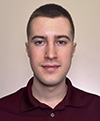 Cole Zemelka – I am a graduating senior studying Mechanical Engineering and Materials Science at the Ohio State University, where I am also a member of the Humanitarian Engineering Scholars group. My previous research focused on finite element simulations of soft magnetic metamaterials and origami structures. I have previously interned at ASM International and Los Alamos National Laboratory. I hope to start graduate school this coming fall, where I can study solid mechanics or structural engineering. In my free time I enjoy hiking and playing soccer.
Cole Zemelka – I am a graduating senior studying Mechanical Engineering and Materials Science at the Ohio State University, where I am also a member of the Humanitarian Engineering Scholars group. My previous research focused on finite element simulations of soft magnetic metamaterials and origami structures. I have previously interned at ASM International and Los Alamos National Laboratory. I hope to start graduate school this coming fall, where I can study solid mechanics or structural engineering. In my free time I enjoy hiking and playing soccer.
Project Description
Mentors: Thomas Thompson (E-14), Garrison Flynn (E-14), Keegan Moore (University of Nebraska - Lincoln)
Students: Taylor Kinnard, Davis McMullan, Katherine Pane
Project Team
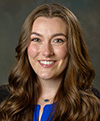 Taylor Kinnard – I am currently a senior at the University of Tulsa studying Mechanical Engineering where I have been able to serve as VP of Outreach for Society of Women Engineers, a member of Tau Beta Pi, and Captain of the Pom Squad. My senior project team is the first group ever from TU to have a design advance as a finalist in the NASA Micro-g NExT Competition, which has (gladly) taken up much of my time this year. I have also recently started working on research surrounding sand particle erosion of various pipeline materials in coordination with Schlumberger. My engineering interests revolve around fluid mechanics and aerodynamic design, and I will be starting work toward my Ph.D. in Aerospace and Mechanical Engineering at Notre Dame University this Fall. Outside of academics, I am usually practicing and performing with my team or going around the city with my friends to find new restaurants, museums, and night-drive-worthy views.
Taylor Kinnard – I am currently a senior at the University of Tulsa studying Mechanical Engineering where I have been able to serve as VP of Outreach for Society of Women Engineers, a member of Tau Beta Pi, and Captain of the Pom Squad. My senior project team is the first group ever from TU to have a design advance as a finalist in the NASA Micro-g NExT Competition, which has (gladly) taken up much of my time this year. I have also recently started working on research surrounding sand particle erosion of various pipeline materials in coordination with Schlumberger. My engineering interests revolve around fluid mechanics and aerodynamic design, and I will be starting work toward my Ph.D. in Aerospace and Mechanical Engineering at Notre Dame University this Fall. Outside of academics, I am usually practicing and performing with my team or going around the city with my friends to find new restaurants, museums, and night-drive-worthy views.
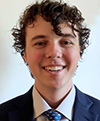 Davis McMullan – I am a Senior at Texas A&M University studying Mechanical Engineering. I am a member of the Zachry Leadership Program, which focuses on the “human” side of engineering, such as empathy in engineering or creativity in design. In addition to this, I am also an active member of our Engineers without Borders university chapter and the University Engineering Honors program. I plan to pursue a Ph.D. in mechanical engineering after graduation, hopefully with a focus on power generation or heat transfer. Outside of school, I love fly fishing, baking, hiking, and generally being outdoors.
Davis McMullan – I am a Senior at Texas A&M University studying Mechanical Engineering. I am a member of the Zachry Leadership Program, which focuses on the “human” side of engineering, such as empathy in engineering or creativity in design. In addition to this, I am also an active member of our Engineers without Borders university chapter and the University Engineering Honors program. I plan to pursue a Ph.D. in mechanical engineering after graduation, hopefully with a focus on power generation or heat transfer. Outside of school, I love fly fishing, baking, hiking, and generally being outdoors.
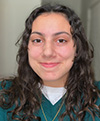 Katherine Pane– I am a junior studying Mechanical Engineering at Harvard University. I have a huge interest in sustainability, which has led me to join a clean energy group on campus and to do part-time CAD modeling for a solar energy startup. In my free time, I enjoy working out, playing volleyball, doing photography, and (when not confined to a dorm mini fridge/microwave combo) cooking!
Katherine Pane– I am a junior studying Mechanical Engineering at Harvard University. I have a huge interest in sustainability, which has led me to join a clean energy group on campus and to do part-time CAD modeling for a solar energy startup. In my free time, I enjoy working out, playing volleyball, doing photography, and (when not confined to a dorm mini fridge/microwave combo) cooking!
Project Description
Mentors: Nicholas Lieven (University of Bristol), Christopher Johnson (W-13), Manuel Vega (W-13)
Students: Jonathan Black, Skylar Callis, Aaron Feizy
Finite element modeling (FEM) and analysis (FEA) are commonly employed for structural design evaluation and iteration. With current technology, full-fidelity modeling of larger assemblies is often computationally prohibitive, requiring simplification of the model's complex features. One such feature that is frequently simplified is the bolted joint, which is ubiquitous in engineering structures. However, approximate methods for modeling joints introduce inaccuracies. To better understand this model-induced error, this paper explores a novel computationally efficient method for the dynamic modeling of bolted connections. This method was applied to finite element modeling of bolted connections in a four-story structure. Experimental modal analysis was conducted to validate the joint modeling method. Bayesian model calibration was used to quantify the model parameter uncertainties and update geometric and material properties.
Project Team
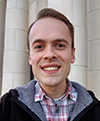 Jonathan Black – I am headed into the last year of my B.S. in Mechanical Engineering at Brigham Young University, where I do research in neuromorphic computing and soft robotics. I love to learn and apply the tools of physics to interesting problems. In the neuromorphic computing lab, we have been investigating the feasibility of training metallic nanofiber devices for machine learning applications, and with the soft robotics lab I have been helping with the design and control of a pneumatically actuated joint. I come from a family of seven kids, and I like reading fantasy, cooking, hiking, and playing games with friends.
Jonathan Black – I am headed into the last year of my B.S. in Mechanical Engineering at Brigham Young University, where I do research in neuromorphic computing and soft robotics. I love to learn and apply the tools of physics to interesting problems. In the neuromorphic computing lab, we have been investigating the feasibility of training metallic nanofiber devices for machine learning applications, and with the soft robotics lab I have been helping with the design and control of a pneumatically actuated joint. I come from a family of seven kids, and I like reading fantasy, cooking, hiking, and playing games with friends.
 Skylar Callis – I graduated from Michigan Technological University in May 2022 with a bachelor’s in civil engineering and a bachelor’s in applied mathematics. I’ve spent the past five years attending the snowiest college in the United States, so Los Alamos is quite the change in climate! Throughout undergrad, I completed research in the field of aviation safety, examining it from engineering, human factors, and mathematical perspectives. Outside of research, I taught for MTU’s swing dance club, leading east coast style lessons. I also enjoy working with acrylic paint and taking portrait photos.
Skylar Callis – I graduated from Michigan Technological University in May 2022 with a bachelor’s in civil engineering and a bachelor’s in applied mathematics. I’ve spent the past five years attending the snowiest college in the United States, so Los Alamos is quite the change in climate! Throughout undergrad, I completed research in the field of aviation safety, examining it from engineering, human factors, and mathematical perspectives. Outside of research, I taught for MTU’s swing dance club, leading east coast style lessons. I also enjoy working with acrylic paint and taking portrait photos.
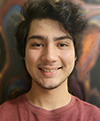 Aaron Feizy – I am a senior aerospace engineering student from Texas A&M University. Like many, I have always had an eye out for math and science but I got my biggest motivation through my high school physics teacher, since then I’ve been obsessed with making things fly. Through my experience as an undergraduate I’ve had opportunity to participate in research and design focusing on hypersonic aerodynamics including the design of a wind tunnel facility and test body analysis in these flow regimes. While I don’t have much experience in this field, I have quickly become passionate about it and plan to pursue a master’s thesis focusing on hypersonic aerodynamics and vehicle design in the future.
Aaron Feizy – I am a senior aerospace engineering student from Texas A&M University. Like many, I have always had an eye out for math and science but I got my biggest motivation through my high school physics teacher, since then I’ve been obsessed with making things fly. Through my experience as an undergraduate I’ve had opportunity to participate in research and design focusing on hypersonic aerodynamics including the design of a wind tunnel facility and test body analysis in these flow regimes. While I don’t have much experience in this field, I have quickly become passionate about it and plan to pursue a master’s thesis focusing on hypersonic aerodynamics and vehicle design in the future.
Project Description
Mentors: TJ Ulrich (ALDW Engineering), Parisa Shokouhi (Pennsylvania State University)
Students: Stephanie Gonzalez, Sierra Horangic, Joseph Lahmann
Project Team
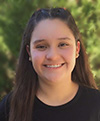 Stephanie Gonzalez – I am a first-year student at the University of Texas at El Paso where I am majoring in Aerospace and Aeronautical Engineering. At UTEP I am a member of Women of Aeronautics and Astronautics, the Yes, She Can! student organization, I am an undergraduate research assistant at the Center for Space Exploration Technology Research (cSETR), and I am also a Terry Scholar. After graduating, I would like to pursue a PhD or start working in the defense industry. Eventually I would like to work at either SpaceX or NASA as I am also interested in space exploration and in the design and manufacturing of rockets and spacecraft. Outside of school I like to draw; color; play sports such as soccer, volleyball, and badminton; and I also love watching soccer.
Stephanie Gonzalez – I am a first-year student at the University of Texas at El Paso where I am majoring in Aerospace and Aeronautical Engineering. At UTEP I am a member of Women of Aeronautics and Astronautics, the Yes, She Can! student organization, I am an undergraduate research assistant at the Center for Space Exploration Technology Research (cSETR), and I am also a Terry Scholar. After graduating, I would like to pursue a PhD or start working in the defense industry. Eventually I would like to work at either SpaceX or NASA as I am also interested in space exploration and in the design and manufacturing of rockets and spacecraft. Outside of school I like to draw; color; play sports such as soccer, volleyball, and badminton; and I also love watching soccer.
 Sierra Horangic – I’m a senior studying Mechanical Engineering at Stanford. I really enjoyed robotics in high school, and love spreading a culture of engineering accessibility (especially to friends with other majors) that I first experienced there, since I’m a huge proponent of everyone knowing how the things around us work. My major includes a concentration in Dynamic Systems, as I’m interested in building mechatronic systems; I’ve learned a couple programming languages and basic circuits to supplement my ability to design systems from the ground up. I’m currently leading a small engineering team prototyping a mobile 3D printer on campus. As a New Hampshire native, I grew up hiking around the state and love (and miss!) the nature there. Definitely looking forward to coming to the Southwestern United States, since I’ve never been before. In my free time, I like to sew and watch YouTube videos about pretty much anything. I’m excited to meet the rest of the group and see what cool projects will be worked on this summer!
Sierra Horangic – I’m a senior studying Mechanical Engineering at Stanford. I really enjoyed robotics in high school, and love spreading a culture of engineering accessibility (especially to friends with other majors) that I first experienced there, since I’m a huge proponent of everyone knowing how the things around us work. My major includes a concentration in Dynamic Systems, as I’m interested in building mechatronic systems; I’ve learned a couple programming languages and basic circuits to supplement my ability to design systems from the ground up. I’m currently leading a small engineering team prototyping a mobile 3D printer on campus. As a New Hampshire native, I grew up hiking around the state and love (and miss!) the nature there. Definitely looking forward to coming to the Southwestern United States, since I’ve never been before. In my free time, I like to sew and watch YouTube videos about pretty much anything. I’m excited to meet the rest of the group and see what cool projects will be worked on this summer!
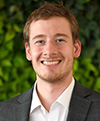 Joseph Lahmann – I am a senior studying Mechanical Engineering and Robotics at Rose-Hulman Institute of Technology. Outside of class you’ll find me involved with Choir, Chamber Choir, Drama Club, Intramural Sports, and a humanitarian campus organization called Make It Happen. I currently serve as an undergraduate research assistant studying the effectiveness of teaching methods of fourbar linkages and am also developing a haptic feedback assistive device for the visually impaired. My current hope is to attend graduate school studying rehabilitation robotics. When I do manage to stumble onto spare time, I enjoy hiking, reading, guitar, cooking, board games and tabletop RPGs.
Joseph Lahmann – I am a senior studying Mechanical Engineering and Robotics at Rose-Hulman Institute of Technology. Outside of class you’ll find me involved with Choir, Chamber Choir, Drama Club, Intramural Sports, and a humanitarian campus organization called Make It Happen. I currently serve as an undergraduate research assistant studying the effectiveness of teaching methods of fourbar linkages and am also developing a haptic feedback assistive device for the visually impaired. My current hope is to attend graduate school studying rehabilitation robotics. When I do manage to stumble onto spare time, I enjoy hiking, reading, guitar, cooking, board games and tabletop RPGs.
Project Description
Mentors: Sandra Zimmerman (E-14), John Schultze (E-14), Peter Fickenwirth (E-14)
Students: Kaelyn Fenstermacher, Sarah Johnson, Aleck Tilbrook
Project Team
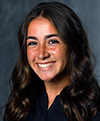 Kaelyn Fenstermacher – I am a junior dual majoring in Mechanical and Aerospace Engineering at New Mexico State University where I am also a jumper on the track and field team. My current research is related to environmental testing of structural dynamics where I am investigating the linear and nonlinear characteristics of the BARC structure as the dimensions and boundary conditions change. Previously I have researched collision prediction and avoidance algorithms for unmanned aerial systems. Outside of my studies, I enjoy hiking, camping, and painting.
Kaelyn Fenstermacher – I am a junior dual majoring in Mechanical and Aerospace Engineering at New Mexico State University where I am also a jumper on the track and field team. My current research is related to environmental testing of structural dynamics where I am investigating the linear and nonlinear characteristics of the BARC structure as the dimensions and boundary conditions change. Previously I have researched collision prediction and avoidance algorithms for unmanned aerial systems. Outside of my studies, I enjoy hiking, camping, and painting.
 Sarah Johnson – I am a senior at Clemson University pursing a bachelor's of science degree in Mechanical Engineering with a minor in Mathematical Sciences. Through Clemson’s co-op program, I worked in power generation plants including hydroelectric, coal fire, natural gas fire, and combined cycle power generation sites throughout the state of South Carolina. At Clemson, I am involved in Central Spirit and works as a supervisor at the campus gym. In my free time, I enjoy running and reading.
Sarah Johnson – I am a senior at Clemson University pursing a bachelor's of science degree in Mechanical Engineering with a minor in Mathematical Sciences. Through Clemson’s co-op program, I worked in power generation plants including hydroelectric, coal fire, natural gas fire, and combined cycle power generation sites throughout the state of South Carolina. At Clemson, I am involved in Central Spirit and works as a supervisor at the campus gym. In my free time, I enjoy running and reading.
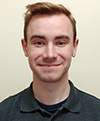 Aleck Tilbrook –I am currently a junior at Liberty University in Lynchburg, VA, pursuing a mechanical engineering degree with a minor in computer science. My undergraduate research projects include biomedical engineering research into an infant bite force sensor, a portable palpable device for detecting tissue abnormalities, and the post-processing of computational fluids dynamic research. My previous internship with Amphenol Broadband Solutions focused on efficiency analysis of the systems, material use and production time estimation. Growing up around the US Navy Submarine force, I have volunteered at the Keyport Naval Museum in Keyport, WA, for several years and currently assist remotely with the development of educational STEM programs. In the future, I plan to attend graduate school to further research that would enhance the safety and well-being of others. I enjoy cycling, hiking and outdoor activities.
Aleck Tilbrook –I am currently a junior at Liberty University in Lynchburg, VA, pursuing a mechanical engineering degree with a minor in computer science. My undergraduate research projects include biomedical engineering research into an infant bite force sensor, a portable palpable device for detecting tissue abnormalities, and the post-processing of computational fluids dynamic research. My previous internship with Amphenol Broadband Solutions focused on efficiency analysis of the systems, material use and production time estimation. Growing up around the US Navy Submarine force, I have volunteered at the Keyport Naval Museum in Keyport, WA, for several years and currently assist remotely with the development of educational STEM programs. In the future, I plan to attend graduate school to further research that would enhance the safety and well-being of others. I enjoy cycling, hiking and outdoor activities.
Project Description
Mentors: Alessandro Cattaneo (E-1), Moises Felipe Mello da Silva (NSEC), Fernando Moreu (University of New Mexico)
Students: Marcus Chen, Allison Davis, Edward Walker
Digital twins are virtual representations of real-world structures that can be used for modeling and simulation. Because of digital twins’ ability to simulate complex structural behaviors, they also have potential for structural health monitoring (SHM) applications. Video-based SHM techniques are advantageous due to the lower installation/maintenance costs, analysis in high-spatial resolution and its non-contact monitoring features. Both digital twins and video-based techniques hold particular interest in the fields of non-destructive evaluation, damage identification, and modal analysis. An effective use of these techniques for SHM applications still poses several challenges. Neural Radiance Fields (NeRFs) are an emerging and promising type of neural network that can render photorealistic novel views of a complex scene using a sparse data set of 2D images. Originally, NeRF was designed to capture static scenes, but recent work has extended its capability to capture dynamic scenes which has implications for medium and long-term SHM. However, to-date most NeRFs use frame-based images and videos as input data. Frame-based video monitoring approaches result in redundant information derived from the fact that, for structural dynamics monitoring, only a small number of active pixels record the actual dynamical changes in the structure, resulting in intensive computational loads for data processing and storage. A promising alternative is event-based imaging, which only records pixel-wise changes on the illumination of a scene. Event-based imaging creates a sparse set of data, while accurately capturing the dynamics. The work proposes a method to extract the dynamics of a structure through simulated loads on a digital twin. The simulated model generated using NeRF methods enabled a fully editable digital twin that could simulate different loads. The digital twin model was then used along with an event camera simulator to generate event-based data. The authors extracted modal information of the structure with manifold learning and blind source separation methods. Validation was performed on a structure of known dynamics using event-based cameras.
Project Team
 Marcus Chen – I am a Junior studying Electrical Engineering at the University of Washington Seattle. Although I come from Southern California, my time at college has been well-worth sacrificing the Sun for. I have experience in sensors and circuit design as part of my school’s Underwater Remotely Operated Vehicles Team, I occasionally pursue personal projects involving robotics and imaging, and I provide private tutoring for students in high school-level and introductory college-level math and science. Outside of school, I enjoy walking, playing casual games, drawing, and watching bad movies.
Marcus Chen – I am a Junior studying Electrical Engineering at the University of Washington Seattle. Although I come from Southern California, my time at college has been well-worth sacrificing the Sun for. I have experience in sensors and circuit design as part of my school’s Underwater Remotely Operated Vehicles Team, I occasionally pursue personal projects involving robotics and imaging, and I provide private tutoring for students in high school-level and introductory college-level math and science. Outside of school, I enjoy walking, playing casual games, drawing, and watching bad movies.
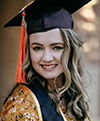 Allison Davis – I am graduate student studying Electrical Engineering at University of Wyoming. I received my Bachelors of Science in Electrical Engineering from UWYO as well. I have been a member of the Western Thunder Marching Band here and am actively involved in our Society of Women Engineers chapter. My current research interests lie in machine learning, computer vision, and image processing. I am originally from the high desert in California but have found a home in Wyoming. Outside of classes I enjoy crocheting, hiking, and reading.
Allison Davis – I am graduate student studying Electrical Engineering at University of Wyoming. I received my Bachelors of Science in Electrical Engineering from UWYO as well. I have been a member of the Western Thunder Marching Band here and am actively involved in our Society of Women Engineers chapter. My current research interests lie in machine learning, computer vision, and image processing. I am originally from the high desert in California but have found a home in Wyoming. Outside of classes I enjoy crocheting, hiking, and reading.
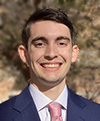 Edward Walker – I am a junior studying mechanical engineering at Rice University, where I am also an undergraduate researcher in the Nanoscale Heat Transfer Lab, a member of Engineers Without Borders, parliamentarian of my residential college, and founding member of the campus shower review club. Currently, my research involves modeling the transient effects of a thermoelectric subjected to a pulsed current and predicting how different thermal devices can take advantage of the increased cooling capability. After graduation, I plan on pursuing my PhD in mechanical engineering and continuing with research into nanoscale heat transfer.
Edward Walker – I am a junior studying mechanical engineering at Rice University, where I am also an undergraduate researcher in the Nanoscale Heat Transfer Lab, a member of Engineers Without Borders, parliamentarian of my residential college, and founding member of the campus shower review club. Currently, my research involves modeling the transient effects of a thermoelectric subjected to a pulsed current and predicting how different thermal devices can take advantage of the increased cooling capability. After graduation, I plan on pursuing my PhD in mechanical engineering and continuing with research into nanoscale heat transfer.
Project Description
Mentors: Francesco Caravelli (T-4), Chuck Farrar (NSEC), Cynthia Reichhardt (T-1)
Students: Luis Corral Cano, Juan Molinar, Joseph Sommer
Project Team
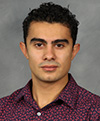 Luis Corral Cano – I am a Latino who grew up in the border of the country, El Paso, and came to New Mexico State University to study a dual major in Mechanical and Aerospace engineering. I am senior student working as an undergraduate research assistant in non-destructive testing in isotropic (aluminum and steel) and orthotropic (AM PLA and ABS) materials using vibrations to look for non-linearities. Outside school I like to work out, go hiking, and watch sports.
Luis Corral Cano – I am a Latino who grew up in the border of the country, El Paso, and came to New Mexico State University to study a dual major in Mechanical and Aerospace engineering. I am senior student working as an undergraduate research assistant in non-destructive testing in isotropic (aluminum and steel) and orthotropic (AM PLA and ABS) materials using vibrations to look for non-linearities. Outside school I like to work out, go hiking, and watch sports.
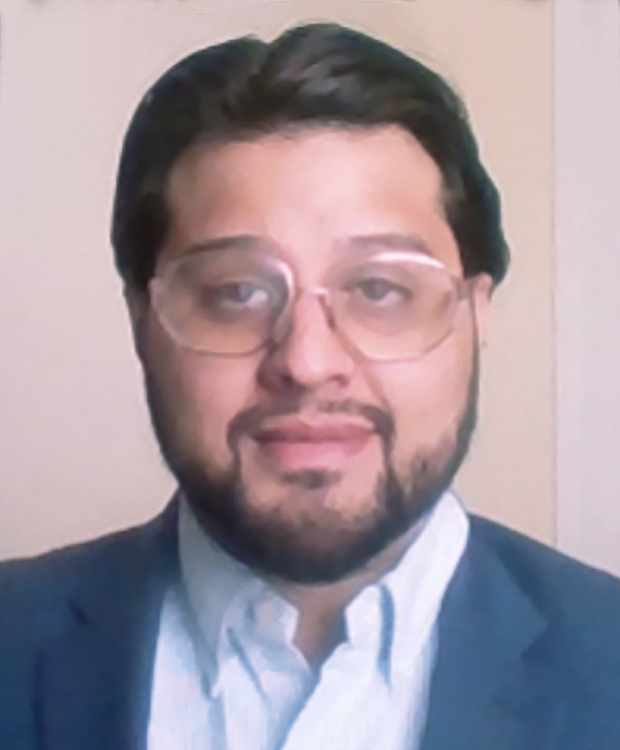 Juan Molinar – I am a first-year graduate student studying Mechanical Engineering at the University of Texas at El Paso, where I am a member of the American Society of Mechanical Engineers (ASME), the Shell Eco-Marathon Team, and a Research Assistant at the Center for Space Exploration Technology Research (cSETR). I am a former LSAMP NSF scholar and currently my research is focused on multi end effector robotic arms in small satellites and additive manufacturing processes in space. Upon completion of my M.S in Mechanical Engineering, I aspire to become a research engineer at a National Lab where I can apply my skills to solve some of the world’s most dire problems. Outside of academia, I enjoy hiking, painting, reading, traveling, and collecting sneakers.
Juan Molinar – I am a first-year graduate student studying Mechanical Engineering at the University of Texas at El Paso, where I am a member of the American Society of Mechanical Engineers (ASME), the Shell Eco-Marathon Team, and a Research Assistant at the Center for Space Exploration Technology Research (cSETR). I am a former LSAMP NSF scholar and currently my research is focused on multi end effector robotic arms in small satellites and additive manufacturing processes in space. Upon completion of my M.S in Mechanical Engineering, I aspire to become a research engineer at a National Lab where I can apply my skills to solve some of the world’s most dire problems. Outside of academia, I enjoy hiking, painting, reading, traveling, and collecting sneakers.
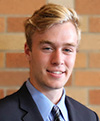 Joseph Sommer – I am a junior studying Mechanical Engineering at the University of Notre Dame, where I am the Vice President of the Club Futsal team, a General Manager for College Mentors for Kids, and a member of the Rocket Team. Currently, I am doing research into robot locomotion using a dual-extruding 3D printer to increase production efficiency and reduce assembly. Outside of classes, I enjoy playing sports especially soccer and basketball, spending time with family and friends, traveling, and reading.
Joseph Sommer – I am a junior studying Mechanical Engineering at the University of Notre Dame, where I am the Vice President of the Club Futsal team, a General Manager for College Mentors for Kids, and a member of the Rocket Team. Currently, I am doing research into robot locomotion using a dual-extruding 3D printer to increase production efficiency and reduce assembly. Outside of classes, I enjoy playing sports especially soccer and basketball, spending time with family and friends, traveling, and reading.
This program has definitely changed my understanding of options I could take in my career, as well as opened my eyes to the option of working at a national lab rather than going into academia. I think it's a phenomenal experience, and one I'd want anyone to be able to experience.
-2022 LADSS Student
LA-UR-22-29953



